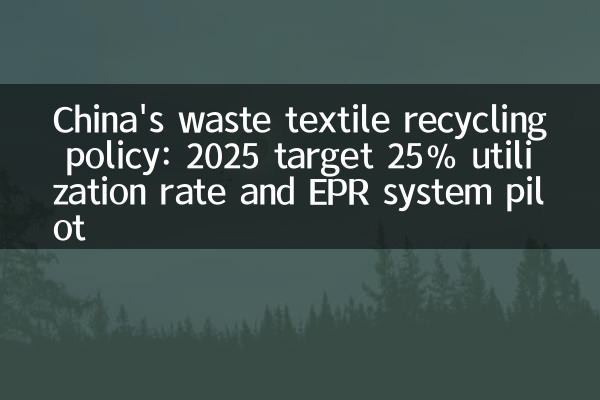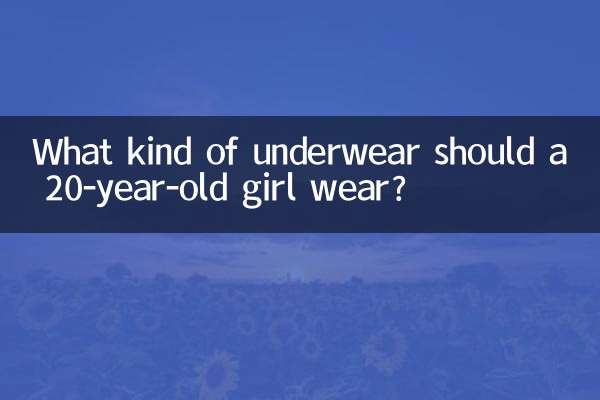China's waste textile recycling policy: 2025 target 25% utilization rate and EPR system pilot
In recent years, with the improvement of global environmental awareness and the urgent need for resource recycling, China has accelerated its policy pace in the field of waste textile recycling. According to the latest policy documents, by 2025, China's waste textile recycling rate will reach 25%, and the Extension of Producer Responsibility (EPR) system will be implemented in some cities. This policy is not only about environmental protection, but will also have a profound impact on the textile industry.
1. Policy background and goals

China is the world's largest textile producer and consumer, producing more than 20 million tons of waste textiles each year, but the recycling rate is less than 10%. In order to meet this challenge, the National Development and Reform Commission, the Ministry of Industry and Information Technology and other departments jointly issued the "Guiding Opinions on Accelerating the Recycling of Waste Textiles", which clearly stated that by 2025, the recycling rate of waste textiles will reach 25%, and a complete recycling, sorting and reuse system will be established.
| index | 2020 data | 2025 goals |
|---|---|---|
| Annual production of waste textiles | 20 million tons | It is expected to grow to 25 million tons |
| Recycling rate | 10% | 25% |
| Recycling system coverage | 30% | 80% |
2. EPR system pilot and industry impact
The Extended Producer Responsibility (EPR) system is one of the core contents of this policy. Pilot cities will require textile production companies to assume environmental protection responsibilities for the entire life cycle of the product, including recycling, processing and reuse. This system will promote companies to improve product design, improve material recyclability, and may give birth to new business models.
The pilot cities include 10 cities including Shanghai, Shenzhen, and Hangzhou, covering the eastern, central and western regions. Pilot enterprises will receive tax incentives and technical support, but they will need to submit recycling data regularly and be evaluated.
| Pilot cities | Key tasks | Time node |
|---|---|---|
| Shanghai | Establish an intelligent recycling network | 2023-2025 |
| Shenzhen | Promote the research and development of recycled fiber technology | 2023-2025 |
| Hangzhou | Explore the "Internet + Recycling" model | 2023-2024 |
3. Industry challenges and opportunities
Despite clear policy objectives, recycling of used textiles still faces multiple challenges:
1.Improper recycling system: Currently, recycling outlets are unevenly distributed and consumer participation is low.
2.Technical bottleneck: The sorting and regeneration technology of blended materials is not yet mature.
3.Cost pressure: The production cost of recycled fiber is higher than that of native fibers.
At the same time, policies also bring new opportunities to the industry:
1.Market size expands: By 2025, the market size of waste textile recycling is expected to exceed 50 billion yuan.
2.Technological innovation: Policy encourages enterprises to develop new regeneration technologies, such as chemical regeneration fibers.
3.Brand value enhancement: Environmentally friendly and compliant companies will gain the favor of consumers.
4. International experience and Chinese path
European and American countries have mature experience in the field of waste textile recycling. For example, the EU has passed legislation requiring member states to achieve full coverage of textile classification collection by 2025, while Germany has established a nationwide recycling network. While drawing on international experience, China needs to explore characteristic paths in light of national conditions:
1.Strengthen policy coordination: Combining waste textile recycling with garbage classification and carbon neutrality goals.
2.Give full play to the role of platform economy: Use e-commerce and social platforms to promote recycling services.
3.Cultivate consumer habits: Improve public participation through incentive mechanisms.
5. Future Outlook
The recycling of waste textiles is an important tool for China to achieve its "dual carbon" goal. With the implementation of policies and technological breakthroughs, China is expected to build a globally leading circular economy system for textiles by 2025. Enterprises need to make arrangements in advance to seize the green track, and consumers will also become the key force in promoting industry change.
(The full text is about 850 words in total)

check the details

check the details